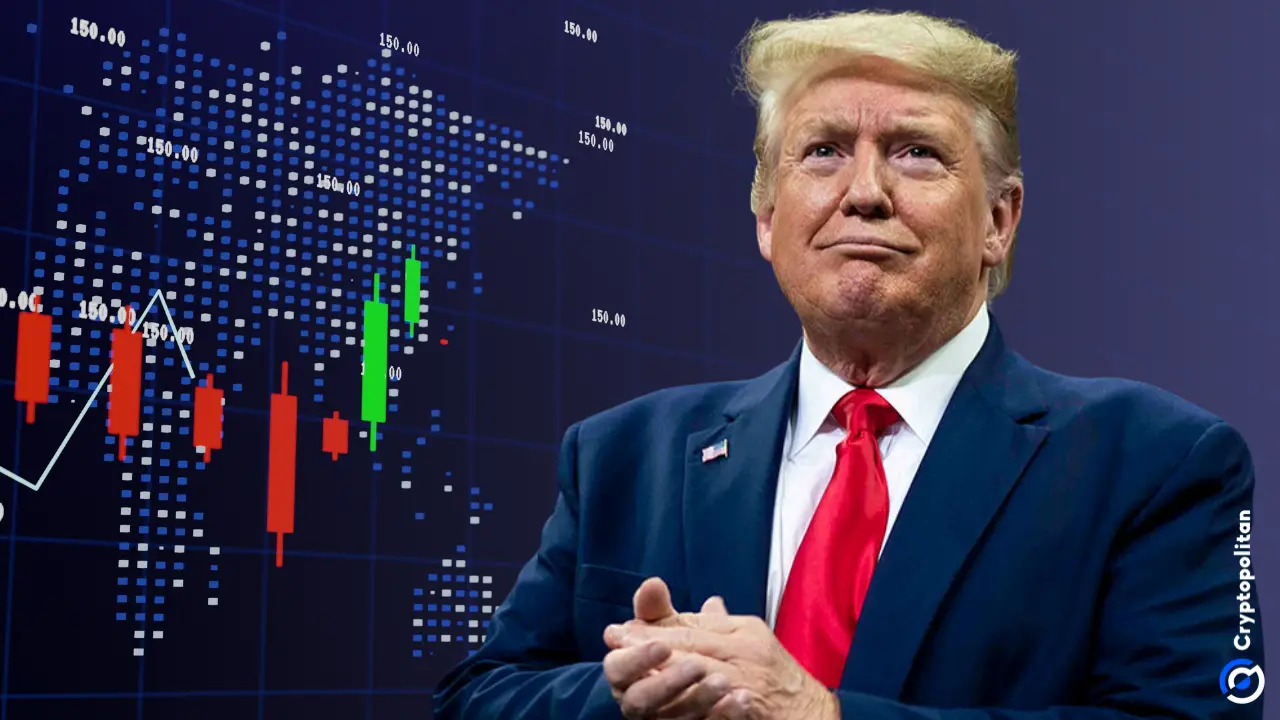Bond Market Volatility: Analyzing The Tariff Shock Impact

Table of Contents
The Mechanics of Tariff Shocks on Bond Yields
Tariff shocks significantly influence bond market volatility through two primary channels: increased inflationary pressure and reduced economic growth.
Increased Inflationary Pressure
Tariffs increase the cost of imported goods, potentially leading to higher inflation. This inflationary pressure forces central banks to react, often by raising interest rates. This directly impacts bond yields.
- Higher inflation erodes the purchasing power of fixed-income investments, making bonds less attractive.
- Central bank responses to inflation often involve raising interest rates, leading to higher yields on newly issued bonds. This is because higher rates make new bonds more competitive with existing investments.
- Existing bonds with lower coupon rates see their prices fall to match the higher market yields. This price decrease reflects the reduced attractiveness of older, lower-yielding bonds in a higher interest rate environment. This price fluctuation contributes to increased bond market volatility.
Reduced Economic Growth
Trade wars and tariffs can stifle economic growth by disrupting supply chains and reducing consumer and business spending. This slowdown in economic activity impacts the demand for bonds, fueling bond market volatility.
- Slower economic growth reduces corporate profitability, impacting the creditworthiness of corporate bonds and increasing their risk profile. This leads to increased spreads and potentially defaults, further increasing bond market volatility.
- Investors may seek safer havens (like government bonds) during periods of economic uncertainty, creating temporary price spikes in these assets. This flight to safety can temporarily reduce yields on government bonds, but the overall effect on the broader bond market is volatility.
- Reduced investment opportunities can lead to a flight to safety, increasing demand for government bonds and potentially decreasing yields in the short term. However, this is often followed by increased volatility as the economic situation clarifies.
Assessing the Volatility Across Different Bond Types
The impact of tariff shocks on bond market volatility varies significantly depending on the type of bond.
Government Bonds vs. Corporate Bonds
Government bonds are generally considered safer than corporate bonds during periods of economic uncertainty. However, both are susceptible to the effects of tariff shocks.
- Government bond yields may rise due to inflationary pressures, but they remain relatively stable compared to corporate bonds. They are considered a safe haven, reducing some of the overall market volatility.
- Corporate bonds, particularly those from companies heavily reliant on international trade, face greater volatility due to increased credit risk. Their price fluctuations are more pronounced in times of economic uncertainty.
- Diversification across different bond types is a key strategy to manage risk during periods of tariff-related volatility. A well-diversified portfolio can mitigate the impact of shocks on any single bond type.
Maturity and Duration Risk
The duration of a bond significantly impacts its sensitivity to interest rate changes. Longer-duration bonds are more susceptible to yield fluctuations caused by tariff shocks.
- Investors holding longer-duration bonds should anticipate greater price volatility during periods of uncertainty. The longer the duration, the greater the sensitivity to interest rate changes.
- Shorter-duration bonds offer more stability but may have lower yields. They are less sensitive to interest rate changes and thus less volatile.
- Careful consideration of bond duration is vital in managing risk in a volatile bond market. Matching the bond duration to your investment horizon is a key risk management technique.
Strategies for Navigating Bond Market Volatility During Tariff Shocks
Several strategies can help investors navigate the increased bond market volatility caused by tariff shocks.
Diversification
Spreading investments across different bond types, maturities, and credit ratings can significantly reduce overall portfolio volatility. A diversified approach minimizes the impact of negative events on any single bond type.
Hedging Strategies
Employing hedging instruments, such as interest rate swaps or options, can help protect against adverse interest rate movements. These instruments help offset potential losses due to interest rate fluctuations.
Active Management
Actively managing a bond portfolio allows for adjustments based on changing economic conditions and tariff developments. This proactive approach allows for timely responses to changes in market conditions.
Conclusion
Tariff shocks have a demonstrable impact on bond market volatility, influencing yields and creating uncertainty for investors. Understanding the mechanisms by which tariffs affect inflation, economic growth, and ultimately bond prices, is vital for informed decision-making. By carefully considering factors like bond type, maturity, and employing diversified strategies, investors can mitigate the risks associated with bond market volatility during periods of trade uncertainty. Stay informed about the latest developments in trade policy and actively manage your bond portfolio to navigate the challenges of bond market volatility. Don't let tariff shocks negatively impact your investment strategy; proactively monitor the situation and adjust accordingly.

Featured Posts
-
 Woman Accuses Prince Andrew Of Sexual Assault Claims 4 Days To Live After Bus Crash
May 12, 2025
Woman Accuses Prince Andrew Of Sexual Assault Claims 4 Days To Live After Bus Crash
May 12, 2025 -
 Time To Call It Quits A Discussion About A Potential John Wick 5
May 12, 2025
Time To Call It Quits A Discussion About A Potential John Wick 5
May 12, 2025 -
 Hacker Accused Of Millions In Office365 Executive Account Breaches
May 12, 2025
Hacker Accused Of Millions In Office365 Executive Account Breaches
May 12, 2025 -
 Streaming Success Henry Cavills Action Thriller Night Hunter
May 12, 2025
Streaming Success Henry Cavills Action Thriller Night Hunter
May 12, 2025 -
 Ufc 315 Predictions Belal Muhammad Vs Jack Della Maddalena Fight Breakdown And Odds
May 12, 2025
Ufc 315 Predictions Belal Muhammad Vs Jack Della Maddalena Fight Breakdown And Odds
May 12, 2025
Latest Posts
-
 Memorial Service For 15 Year Old School Stabbing Victim
May 13, 2025
Memorial Service For 15 Year Old School Stabbing Victim
May 13, 2025 -
 Tributes Paid At Funeral For Teenager Stabbed At School
May 13, 2025
Tributes Paid At Funeral For Teenager Stabbed At School
May 13, 2025 -
 Services Held For 15 Year Old Boy Killed In School Attack
May 13, 2025
Services Held For 15 Year Old Boy Killed In School Attack
May 13, 2025 -
 Your Source For Efl Highlights Videos And Analysis
May 13, 2025
Your Source For Efl Highlights Videos And Analysis
May 13, 2025 -
 Community Gathers To Remember 15 Year Old Stabbing Victim
May 13, 2025
Community Gathers To Remember 15 Year Old Stabbing Victim
May 13, 2025
